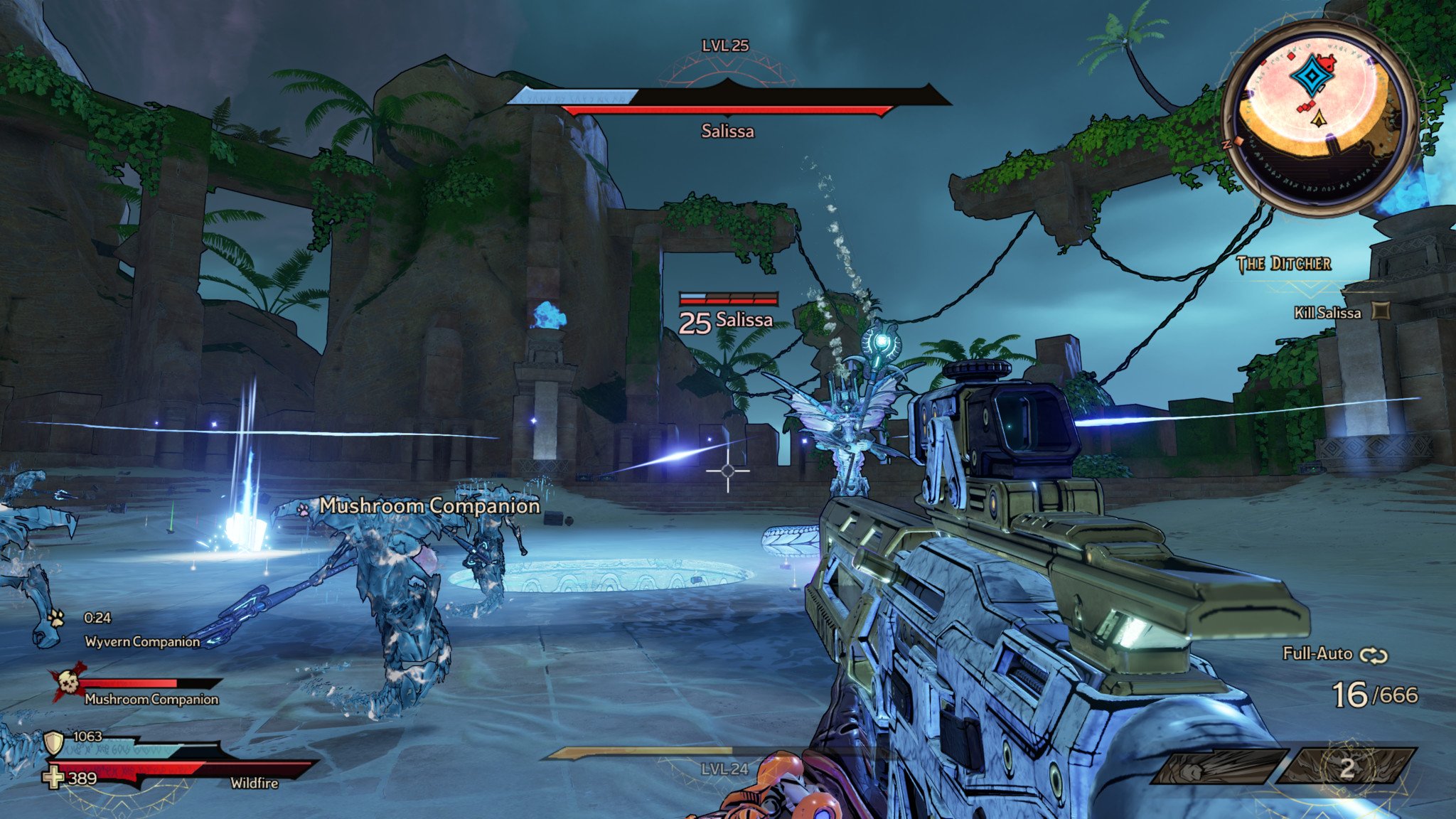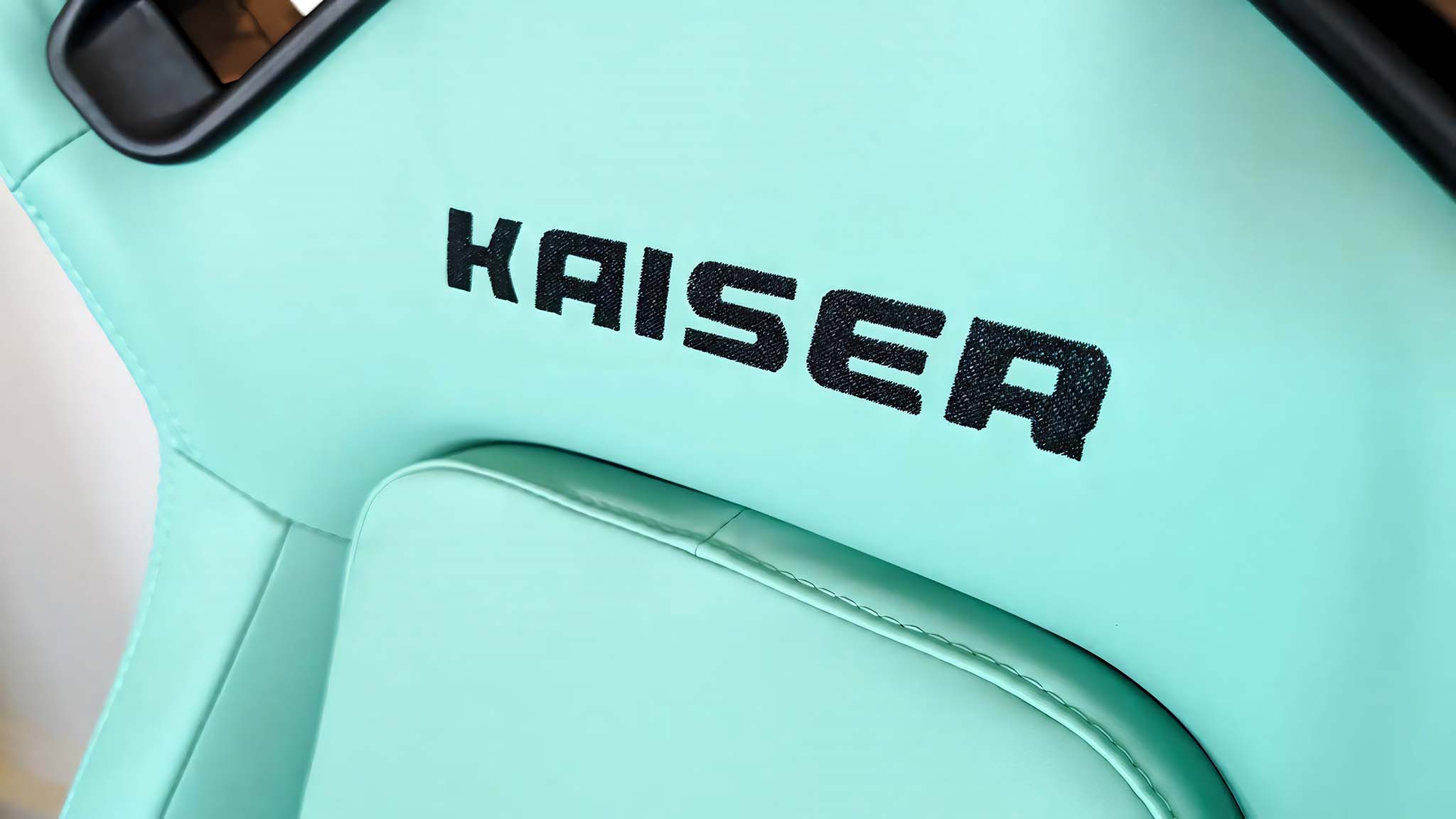After the success of Tiny Tina's Assault of Dragon Keep, it was only a matter of time before Bunkers & Badasses received a full-fledged game. Tiny Tina's Wonderlands is exactly that, taking the tried-and-true Borderlands formula and mixing it with the fantastical themes of Dungeons & Dragons. It sets itself apart from the main series, however, in interesting ways. Multiclassing has been introduced, opening up exciting new ways to play, and the Overworld offers plenty of hidden secrets that are worth searching for.
That said, it's held back by typical Borderlands mechanics that need some tweaking, like loot drops. And though the story in Borderlands was never really its strong suit, Tiny Tina's Wonderlands had such an anticlimactic ending that it felt unsatisfying. Still, the Borderlands games have always shined in their minute-to-minute gunplay, making them some of the best Xbox games, and that rings true in Wonderlands.
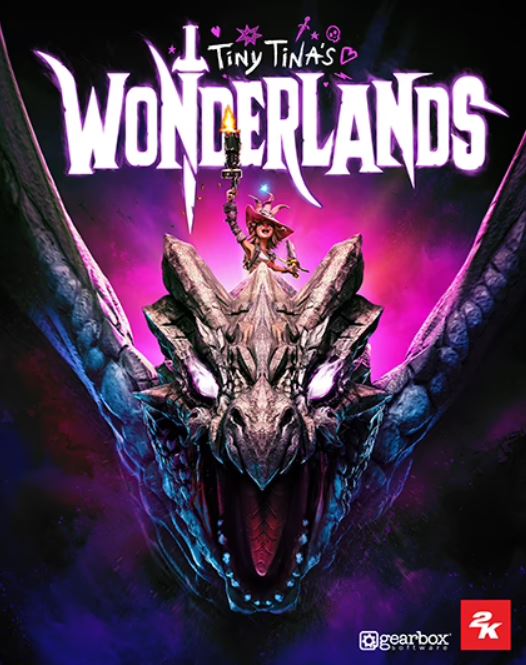
Bottom line: Tiny Tina's Wonderlands takes the classic Borderlands formula and puts its own spin on it in a mostly successful attempt to blend fantasy and sci-fi. Though the ending didn't land as well as it could have, the entire journey is well worth playing.
For
- Minute-to-minute gameplay is as good as ever
- Fully embraces the fantasy theme
- Multiclassing opens up more playstyles
- Feels like a real D&D game between friends
- Melee builds are more viable than ever
Against
- Loot drops could use tweaking
- Spells are a fun but poor substitute to grenades
- Anticlimactic ending
Disclaimer: This review was made possible by a review code provided by 2K. The company did not see the contents of the review before publishing.
Tiny Tina's Wonderlands: What's great
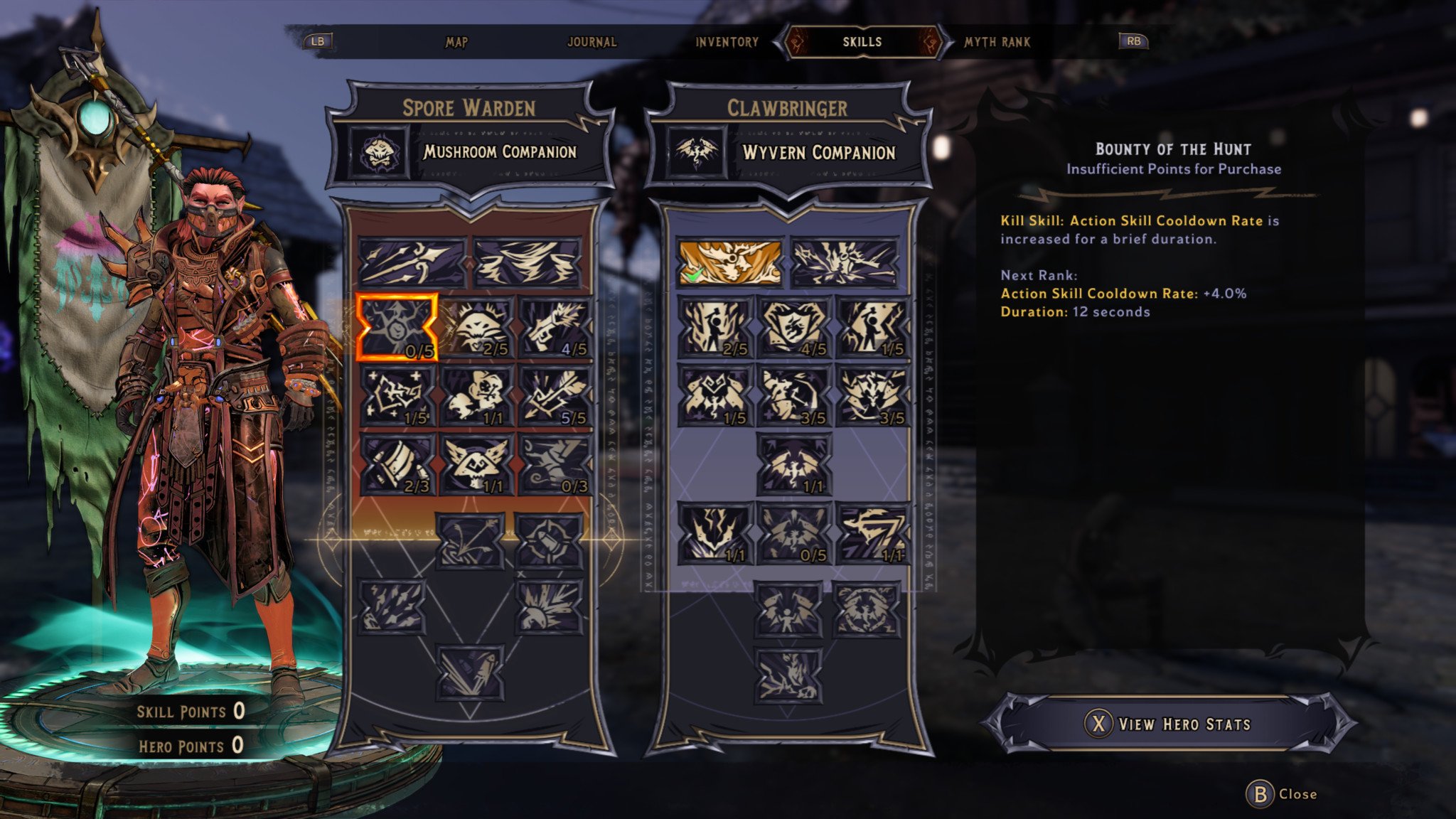
| Category | GameNameXXX |
|---|---|
| Title | Tiny Tina's Wonderlands |
| Developer | Gearbox Software |
| Publisher | 2K |
| Genre | Action-shooter |
| Minimum requirements | Windows 10, Intel i5-3570, 6GB RAM, NVIDIA GeForce GTX 960 |
| Game size | 37.4GB |
| Play time | 25 hours |
| Players | Singleplayer, multiplayer |
| Launch price | $60 |
Wonderlands doesn't feel like Gearbox half-assed the fantasy theme; the team went all-in on it. It wears its inspiration on its sleeve and every aspect is colored with that fantasy aspect, up to and including Fight for your Life mode, which has been dubbed a Death Save when scoring a Second Wind. This, alongside new mechanics like multiclassing and a proper melee system, prevents it from feeling like a glorified expansion. It may not be as large as Borderlands 2 or 3, but it earns its place as a standalone title.
One of the first new features you'll encounter is the ability to fully customize your character, now called a Fatemaker rather than a Vault Hunter. Most of this is cosmetic, selecting their facial features and size, but players can also choose a background for them (separate from their class), which dictates some of their starting stats. For instance, choosing the Village Idiot background will start players off with a lower intelligence, meaning their spell cooldown is nerfed. As players level up, they can invest Hero Points back into these stats, so character backgrounds only make a difference during the early game.
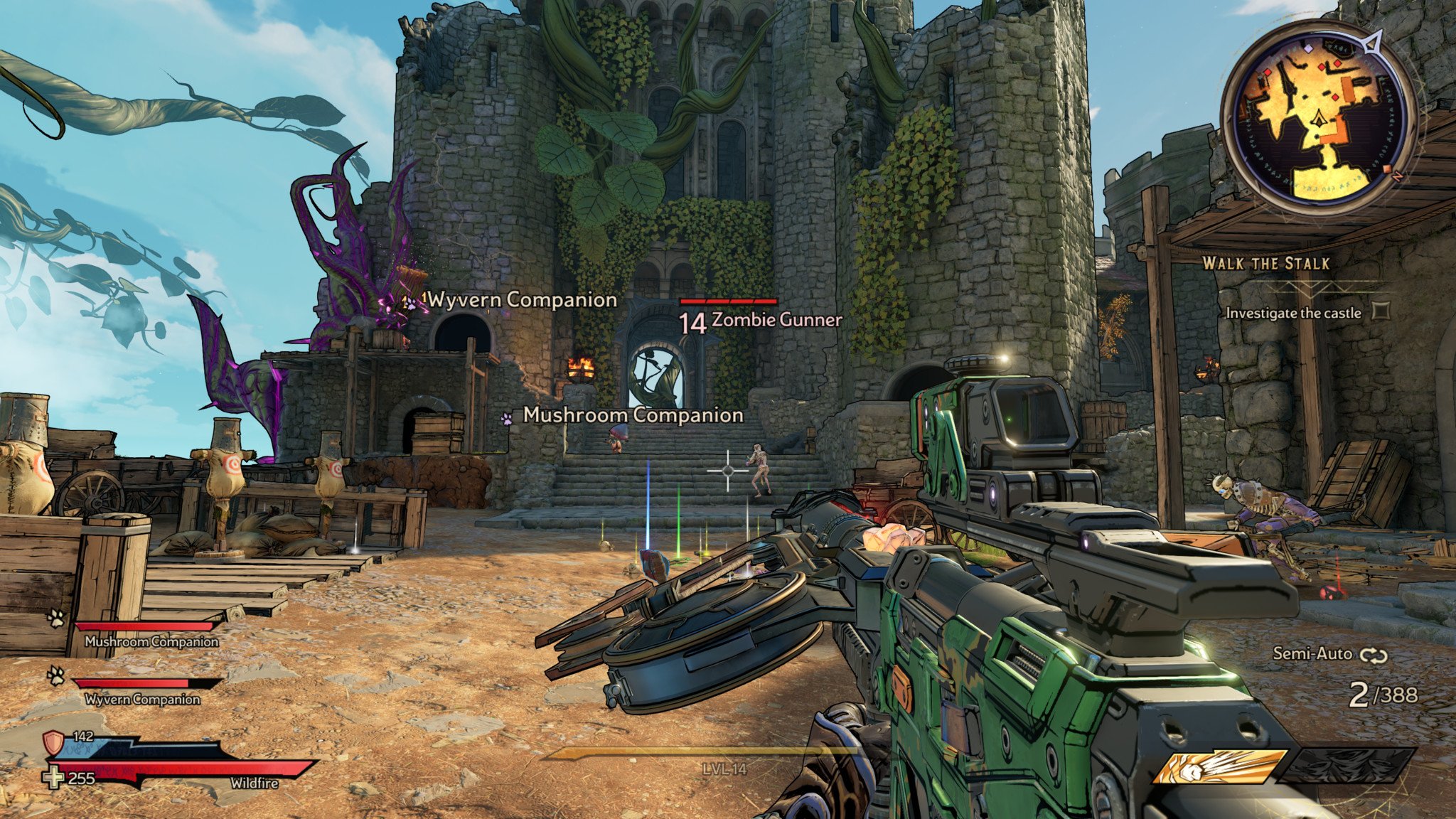
The best part about Fatemakers is that they have the ability to multiclass after hitting a certain level, opening up a new skill tree, Action Skills, and Class Feat. Because only one Action Skill can be equipped at a time regardless of how many players have unlocked, I found that Class Feats are what make all of the difference. I multiclassed a Spore Warden and Clawbringer, meaning I had two companions with me at all times — a mushroom and a wyvern. If the mushroom was busy reviving me after falling in combat, my wyvern could still go around and deal damage to enemies. And because players aren't locked to any secondary class, they can change it after they've completed the game, giving everyone an opportunity to try out all of the classes without starting a new save file.
The best part about Fatemakers is that they have the ability to multiclass.
Though you could argue that Borderlands 3 provided more options with four Vault Hunters that each had three skill trees (eventually four with the Designer's Cut), and corresponding Action Skills for each tree, Wonderlands may feel more approachable and because it limits your options. It strikes a good balance between player freedom and being too basic, ending up in a nice middle ground.
A testament to the new dedicated melee system, I actually liked using melee weapons. That's something I'd never though I'd say in a Borderlands game, but Wonderlands make proper melee builds more viable than ever. As I said in my Tiny Tina's Wonderlands preview, I still think that melee weapons can sometimes feel lethargic and floaty when swinging them, but it's never a major issue that stopped me from using them.
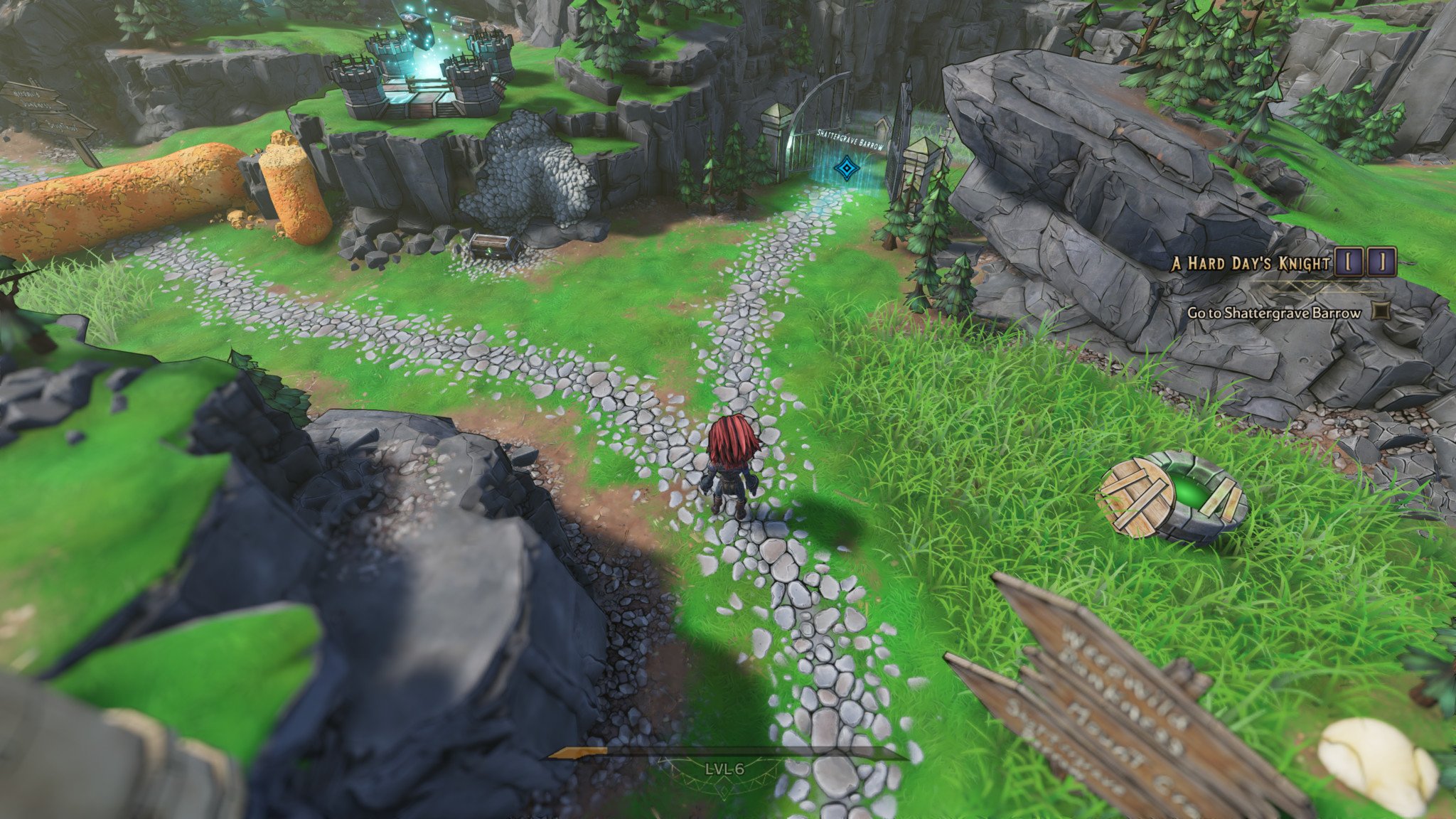
Even though I would have liked more areas to explore, Wonderlands provided a good mix of environments. A few locations aren't necessary to enter for the main quest, but you'll want to visit them regardless. They have their own questlines and help you level up before approaching later main missions.
If you're wondering where the Overworld comes into play, that's the area you'll be exploring between proper locations like Sunfang Oasis or Crackmast Cove. The random encounters work to help level you up, but I found them to be more annoying than anything, and ended up punching enemies that popped up before they could trigger an encounter. The Overworld mainly served as a tool to travel between locations without breaking the immersion and taking you out of that D&D experience. But there are some cool secrets to uncover across the map, so it's worthwhile to explore.
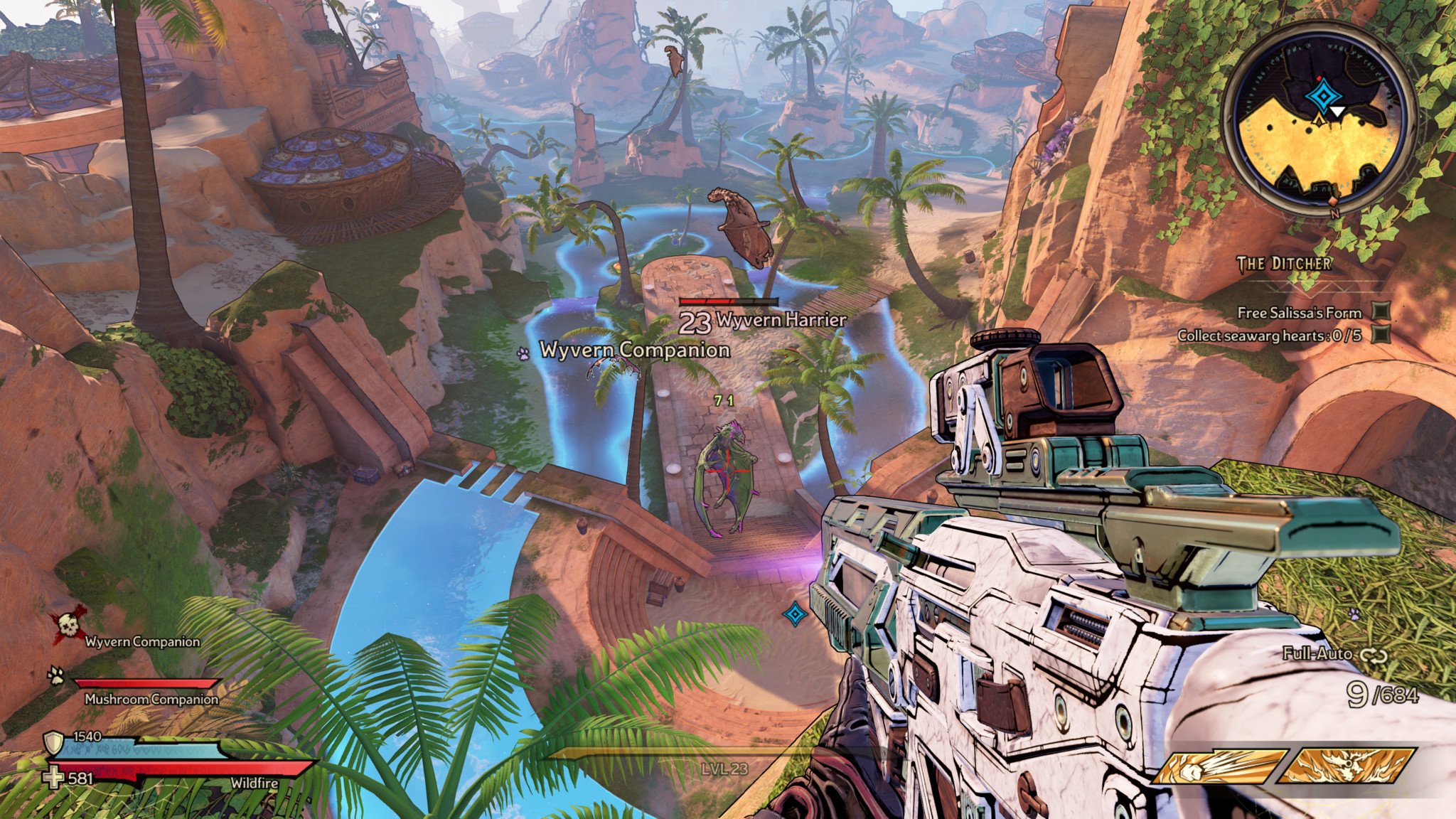
Tiny Tina's Wonderlands' endgame is all about the Chaos Chamber, what Gearbox describes as an "ever-shifting portal into a randomized dungeon." I didn't get to spend too much time with the Chaos Chamber because I was mopping up quests elsewhere, but it serves as a good activity to keep people playing, with difficult boss fights and a chance for better loot.
It's easy to see that the writers are part of tabletop campaigns themselves, because the exact type of humor between friends is there. Early on you'll be told to seduce a drawbridge in order to lower it. It's a dumb joke, but as someone who's currently a part of four tabletop campaigns (I know, it's a lot. Don't judge me), it's accurate. That's how we act and joke around. And it perfectly fits with the series' style of humor, so it doesn't seem out of place. The way the characters interacted with one another felt genuine to that tabletop experience, too.
There's a part where Valentine and Frette, the other characters in your adventuring party, disagree on how to approach a mission and this causes some tension between the two. Like any good DM, Tina allows them to talk it out and hear each other's perspective so that everyone can continue to have fun. Wonderlands hits home that this is supposed to be a fun game among friends, and even if it isn't always perfect for everyone, you can still enjoy the experience.
Tiny Tina's Wonderlands: What needs work
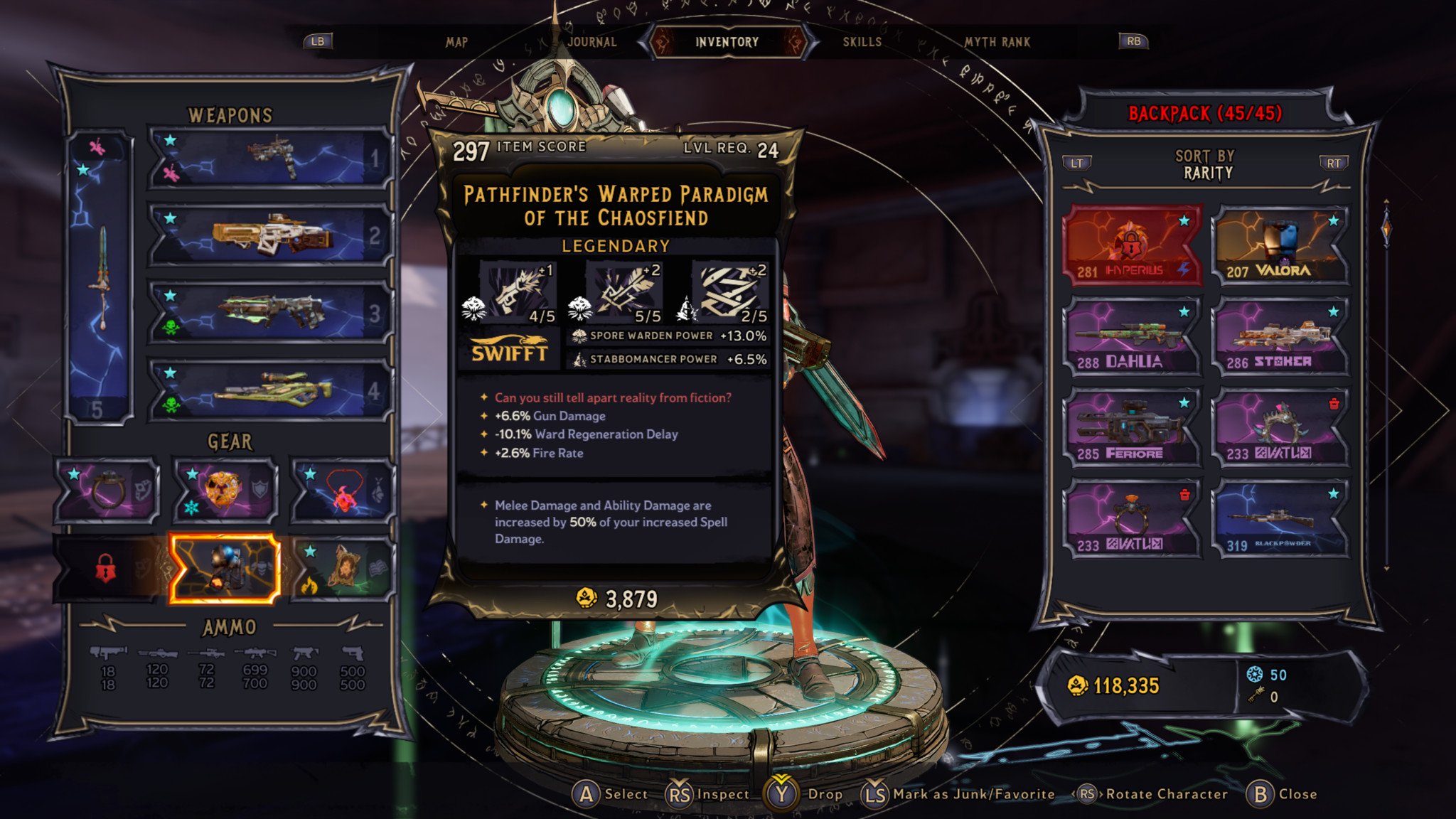
If you've played through Tiny Tina's Assault on Dragon Keep, you'll know that much of it deals with Tina's grief surrounding Roland's death, and her coming to terms with it. Wonderlands similarly brings up Tina's trauma and insecurities, but doesn't engage with them in any meaningful way. Maybe it's not the intent of Wonderlands to delve further into that trauma, instead wanting to bring levity to players during a tumultuous time in the real world, but constantly referencing her insecurities and then seemingly brushing them under the rug seems disingenuous.
Tina is constantly asking the party for reassurances that they want to keep playing and that they'll stick around, hinting that she's afraid of abandonment. In the end, no one ever really discusses this any further; they just decide to continue with the game without having a conversation about it.
You'll eventually come to learn that the Dragon Lord and Tina have a history, and this likewise felt underdeveloped. When you learn about the Dragon Lord's past and his motivations, it paints Tina out to be an immature child. There's certainly a part of her character that leans into that mentality, but Borderlands has proven in the past that there's a lot more to her, and Wonderlands almost seems like a regression of past character development.
Aside from any issues I had with the story and characters, gameplay was mostly great. I'd only say that, while fun to cast depending on their abilities, spells didn't act as proper substitutes for grenades, and I found myself missing grenades more than once. The loot drops also need to be tweaked, too. I played for roughly 25 hours and earned three or four legendary weapons. When many of the bosses, including the final boss, barely even drop blue or purple gear, it feels cheap. This can thankfully be fixed, but it was something that soured my time playing it. And don't get me started on how many cosmetic items drop. It made me dread seeing a purple item erupt from a fallen enemy, because 90% of the time it was a useless cosmetic item.
Tiny Tina's Wonderlands: Should you play it?
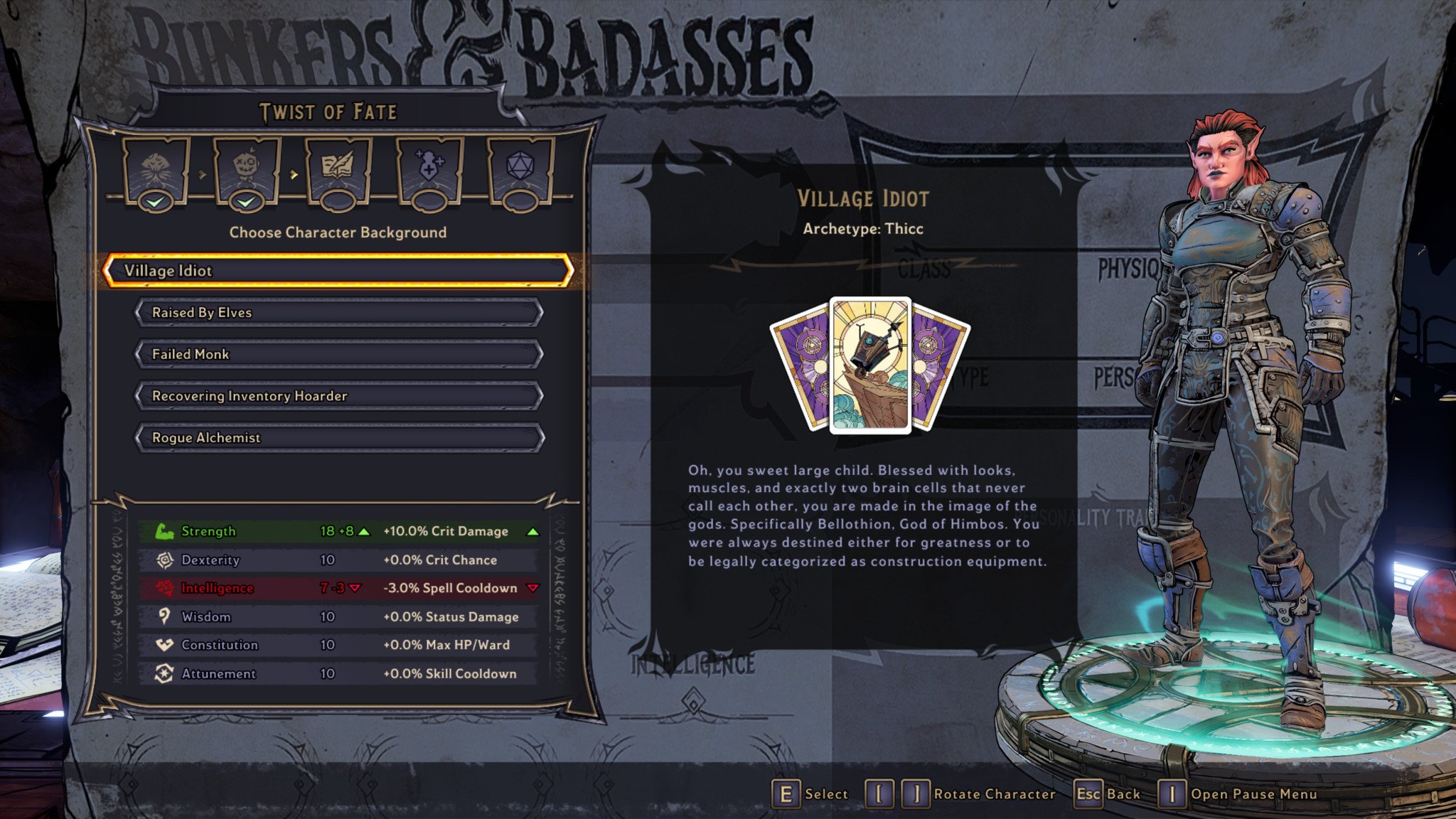
Despite some missteps with its characters and story, Tiny Tina's Wonderlands is a hell of a lot of fun to play. And in a time when games are getting bigger and bigger, it's nice to get a bite-sized sample of Borderlands (and yes, we're counting 20-30 hours as bite-sized here).
If what turned you off from Borderlands 3 was the cringy influencer story, Tiny Tina's Wonderlands may be perfect for you. But if you aren't a fan of the fundamental gameplay loop in Borderlands, then Wonderlands won't change that. Wonderlands is a Borderlands game through and through, but it changes just enough mechanics to make it feel new and fresh. The addicting loot grind is still there, even if it needs some tweaking, and that'll be sure to keep players coming back for more.
Jennifer Locke has been playing video games nearly her entire life, and is very happy Xbox is growing a stronger first-party portfolio. You can find her obsessing over Star Wars and other geeky things on Twitter @JenLocke95.
